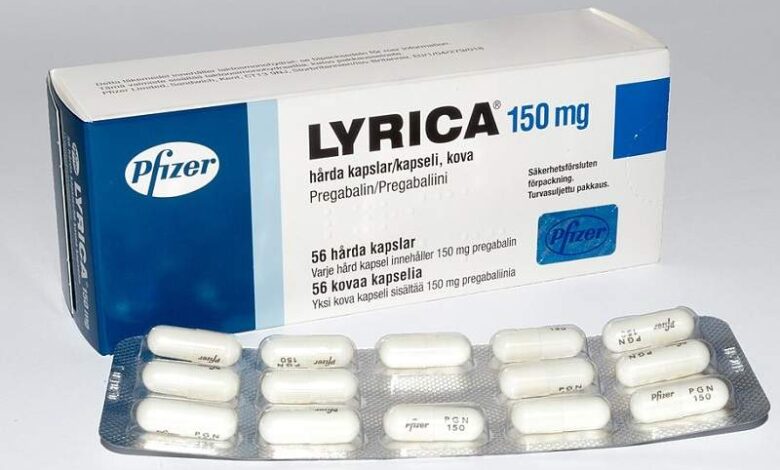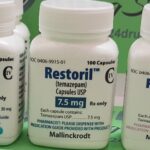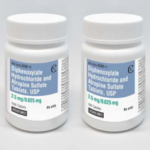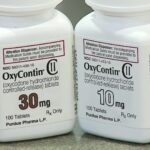Pregabalin: Uses, Side Effects, Abuse, Addiction

Pregabalin, sold under the brand name Lyrica among others belongs to a class of medications called anticonvulsants. It works by decreasing the number of pain signals that are sent out by damaged nerves in the body. Pregabalin capsules, oral solution (liquid), and extended-release (long-acting) tablets are used to relieve neuropathic pain (pain from damaged nerves) that can occur in your arms, hands, fingers, legs, feet, or toes if you have diabetes and postherpetic neuralgia (PHN; the burning, stabbing pain or aches that may last for months or years after an attack of shingles).
Pregabalin capsules and oral solution are also used to relieve neuropathic pain that can occur after a spinal cord injury and to treat fibromyalgia (a long-lasting condition that may cause pain, muscle stiffness and tenderness, tiredness, and difficulty falling asleep or staying asleep). Pregabalin capsules and oral solution are used along with other medications to treat certain types of seizures in adults and children 1 month of age and older. Pregabalin, including its salts, and all products containing pregabalin are controlled substances under Schedule V of the CSA.
How should pregabalin be used?
Pregabalin comes as a capsule, an oral solution, and as an extended-release tablet to take by mouth. Pregabalin capsules and oral solution are usually taken with or without food two or three times a day. Pregabalin extended-release tablets are usually taken once daily after an evening meal. Take pregabalin at around the same time(s) every day. Follow the directions on your prescription label carefully, and ask your doctor or pharmacist to explain any part you do not understand.
Swallow the extended-release tablets whole; do not cut, chew, or crush them.
Your doctor will probably start you on a low dose of pregabalin and may gradually increase your dose during the first week of treatment.
Take pregabalin exactly as directed. Pregabalin may be habit forming. Do not take a larger dose, take it more often, or take it for a longer period of time than prescribed by your doctor.
Pregabalin may help control your symptoms but will not cure your condition. It may take several weeks or longer before you feel the full benefit of pregabalin. Continue to take pregabalin even if you feel well. Do not stop taking pregabalin without talking to your doctor, even if you experience side effects such as unusual changes in behavior or mood. If you suddenly stop taking pregabalin, you may experience withdrawal symptoms, including trouble falling asleep or staying asleep, nausea, diarrhea, headaches, or seizures. Your doctor will probably decrease your dose gradually over at least 1 week.
Your doctor or pharmacist will give you the manufacturer’s patient information sheet (Medication Guide) when you begin treatment with pregabalin and each time you refill your prescription. Read the information carefully and ask your doctor or pharmacist if you have any questions.
What side effects can this medication cause?
Pregabalin may cause side effects. Tell your doctor if any of these symptoms are severe or do not go away:
- tiredness
- dizziness
- headache
- dry mouth
- nausea
- vomiting
- constipation
- gas
- bloating
- ”high” or elevated mood
- speech problems
- difficulty concentrating or paying attention
- difficulty remembering or forgetfulness
- anxiety
- lack of coordination
- loss of balance or unsteadiness
- uncontrollable shaking or jerking of a part of the body
- muscle twitching
- weakness
- increased appetite
- weight gain
- back pain
Some side effects can be serious. If you experience any of these symptoms, call your doctor immediately:
- blurred vision, double vision, or other changes in eyesight
- hives
- rash
- itching
- blisters
- swelling of the eyes, face, throat, mouth, lips, gums, tongue, head or neck
- swelling of the arms, hands, feet, ankles, or lower legs
- shortness of breath
- wheezing
- muscle pain, tenderness, soreness, or weakness, especially if it comes along with fever
- chest pain
- difficulty breathing; bluish-tinged skin, lips, or fingernails; confusion; or extreme sleepiness
If you have diabetes, you should know that pregabalin has caused skin sores in animals. Pay extra attention to your skin while taking pregabalin, and tell your doctor if you have any sores, redness, or skin problems.
Pregabalin may cause other side effects. Call your doctor if you have any unusual problems while taking this medication.
Pregabalin Safety Information
Before taking pregabalin,
- tell your doctor and pharmacist if you are allergic to pregabalin, any other medications, or any of the ingredients in pregabalin preparations. Ask your pharmacist for a list of the ingredients.
- tell your doctor and pharmacist what other prescription and nonprescription medications, vitamins, nutritional supplements, and herbal products you are taking or plan to take. Be sure to mention any of the following: angiotensin converting enzyme (ACE) inhibitors such as benazepril (Lotensin, in Lotrel), captopril (Capoten, in Capozide), enalapril (Vasotec, in Vaseretic, Lexxel), fosinopril (Monopril), lisinopril (Prinivil, Zestril, in Prinzide, Zestoretic), moexipril (Univasc, in Uniretic), perindopril (Aceon), quinapril (Accupril, in Accuretic, Quinaretic), ramipril (Altace), and trandolapril (Mavik, in Tarka); antidepressants; antihistamines; medications for anxiety including lorazepam (Ativan); medications for mental illness or seizures; certain medications for diabetes such as pioglitazone (Actos, in Duetact) and rosiglitazone (Avandia, in Avandaryl, Avandamet); opioid (narcotic) pain medications including hydrocodone (in Hydrocet, in Vicodin, others), morphine (Avinza, Kadian, MSIR, others), or oxycodone (OxyContin, in Percocet, others); sedatives; sleeping pills; and tranquilizers. Your doctor may need to change the doses of your medications or monitor you carefully for side effects.
- tell your doctor if you drink or have ever drunk large amounts of alcohol, use or have ever used street drugs, or have overused prescription medications. Also tell your doctor if you have or have ever had swelling of the eyes, face, lips, tongue, or throat; vision problems; heart failure; bleeding problems or a low number of platelets (type of blood cell needed for blood clotting) in your blood, or lung, heart, or kidney disease.
- tell your doctor if you are pregnant or if you or your partner plans to become pregnant. Also tell your doctor if you are breastfeeding. If you or your partner becomes pregnant while you are taking pregabalin, call your doctor. Pregabalin has caused decreased fertility in male animals and birth defects in the offspring of male and female animals who were treated with the medication. There is not enough information to tell if pregabalin causes these problems in humans.
- if you are having surgery, including dental surgery, tell the doctor or dentist that you are taking pregabalin.
- you should know that pregabalin may make you dizzy or drowsy. Do not drive a car, operate machinery, or do other dangerous activities until you know how this medication affects you. Ask your doctor when you may do these activities.
- do not drink alcohol while taking pregabalin. Alcohol can add to the drowsiness caused by this medication.
- you should know that your mental health may change in unexpected ways and you may become suicidal (thinking about harming or killing yourself or planning or trying to do so) while you are taking pregabalin for the treatment of epilepsy, mental illness, or other conditions. A small number of adults and children 5 years of age and older (about 1 in 500 people) who took anticonvulsants such as pregabalin to treat various conditions during clinical studies became suicidal during their treatment. Some of these people developed suicidal thoughts and behavior as early as 1 week after they started taking the medication. There is a risk that you may experience changes in your mental health if you take an anticonvulsant medication such as pregabalin, but there may also be a risk that you will experience changes in your mental health if your condition is not treated. You and your doctor will decide whether the risks of taking an anticonvulsant medication are greater than the risks of not taking the medication. You, your family, or your caregiver should call your doctor right away if you experience any of the following symptoms: panic attacks; agitation or restlessness; new or worsening irritability, anxiety, or depression; acting on dangerous impulses; difficulty falling or staying asleep; aggressive, angry, or violent behavior; mania (frenzied, abnormally excited mood); talking or thinking about wanting to hurt yourself or end your life; withdrawing from friends and family; preoccupation with death and dying; giving away prized possessions; or any other unusual changes in behavior or mood. Be sure that your family or caregiver knows which symptoms may be serious so they can call the doctor if you are unable to seek treatment on your own.




